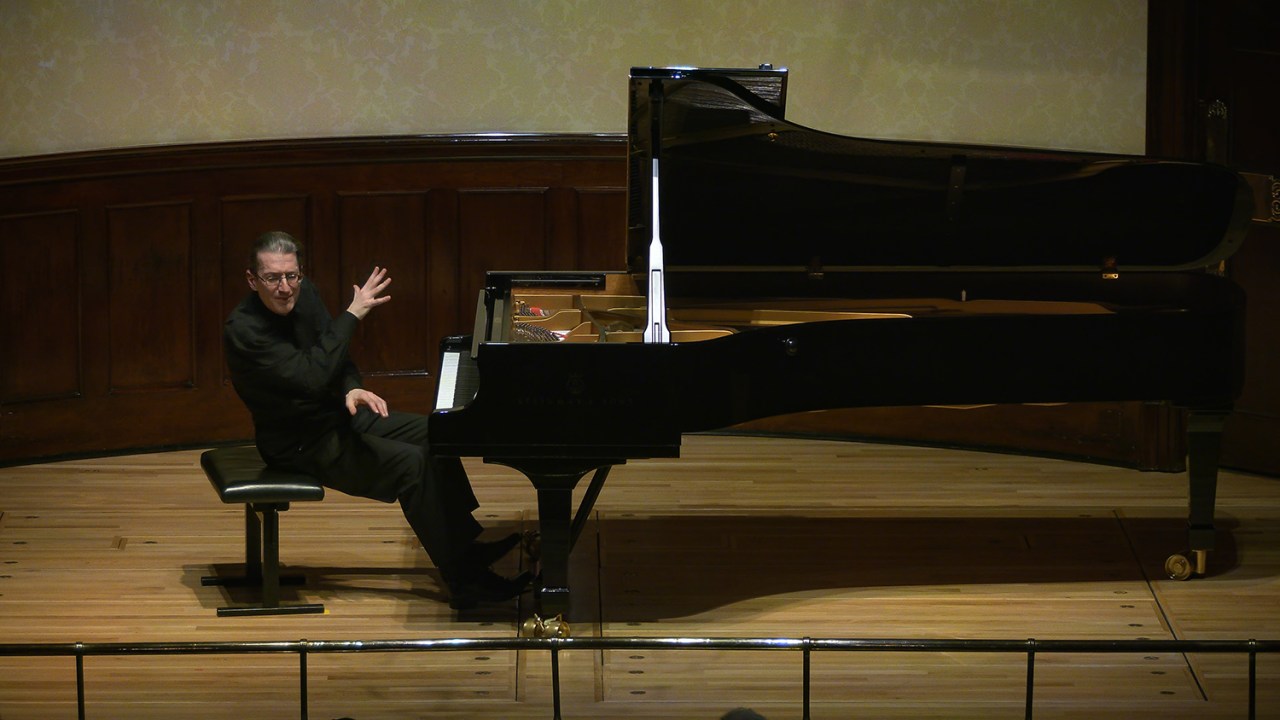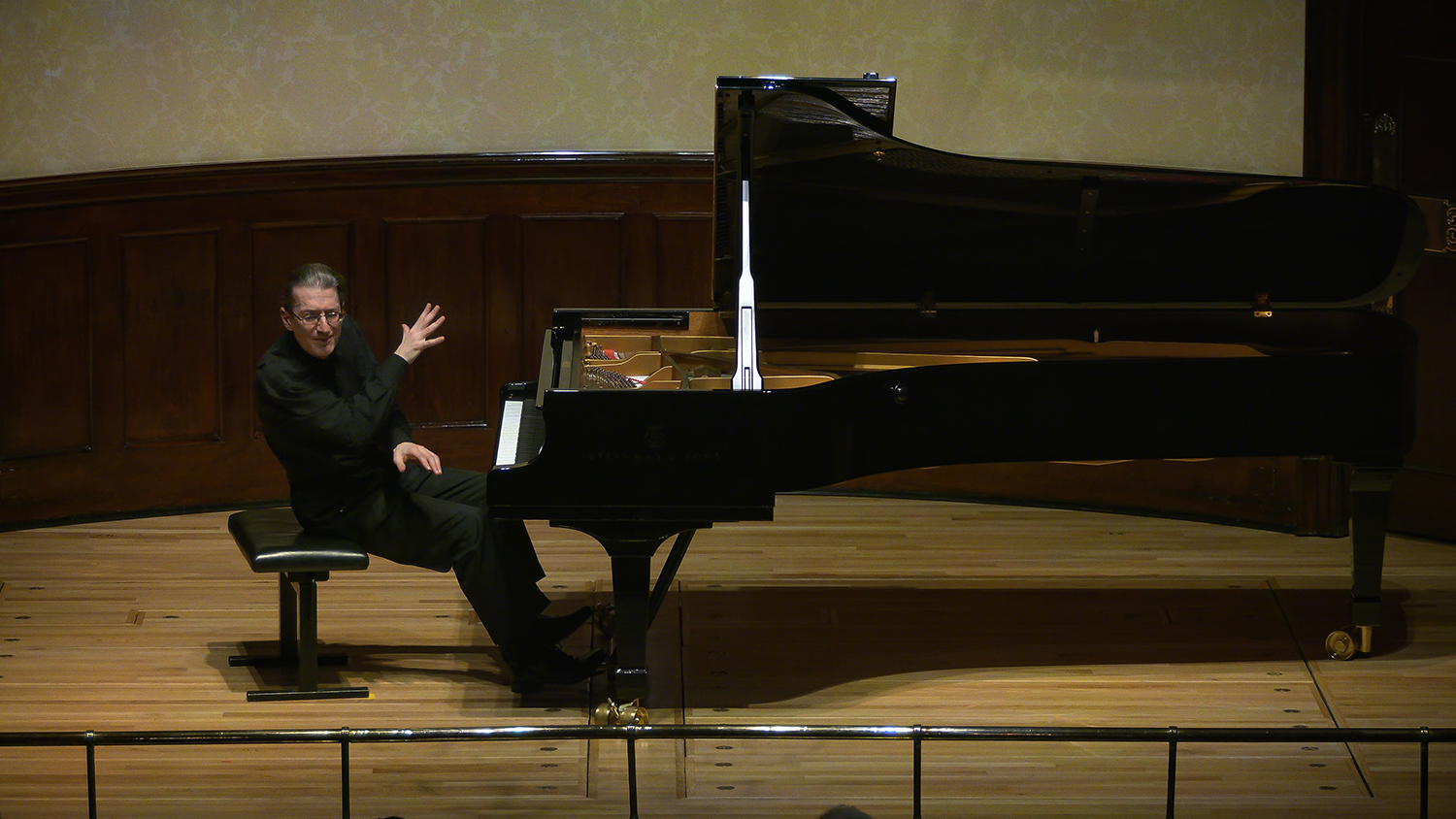Imagine being a concert pianist and choosing your own programmes. All those possibilities; all that power! ‘I am the orchestra!’ declared Hector Berlioz, imagining himself inside the head of Franz Liszt. ‘I am the chorus and conductor as well. My piano sings, broods, flashes, thunders.’ The heart lifts when a pianist thinks a little differently about their recital programmes and tries to make connections and tell stories beyond the familiar tramlines of Bach, Beethoven and late Schubert. Don’t get me wrong; the Austro-German big boys are a healthy part of a balanced musical diet. It’s just that – well, you know. There is a world elsewhere.
Solo piano recitals leave me cold. Possibly it’s the effect of too much Wagner at an early age
Llyr Williams played Bartok, Chopin, Albeniz and Peter Warlock, and he made them sound as if no combination could possibly be more natural. If there was a unifying theme, it was the influence of folk music, but Williams didn’t labour the point and certain elements of the programme seemed to have been chosen as much to emphasise differences as similarities. Bartok kicked things off: the six Romanian Folk Dances, tiny melodies noted down in Transylvania shortly before the first world war and then chiselled, shaped and polished, much as a jeweller cuts and refines a raw gemstone.
Bartok closed the first half too; the Piano Sonata of 1926, a work generally assumed (like much of Bartok’s middle-period music) to be heavily folk-inspired. It’s a very different beast though, with its controlled motor rhythms, low-lying melodies and lightning flashes, all set against a brooding cloudscape of close-worked harmonies. And finishing the concert, in pointed contrast, came Liszt’s twelfth Hungarian Rhapsody, as unfashionable a piece of virtuoso swagger as you’re likely to hear in these calorie-counting days. This is what 19th-century audiences thought Hungarian folk music sounded like; we’ve all gone organic since then.
Still, it was good to hear it – to spot the defiantly uncool antecedents of Bartok’s modernism (those thunderous tremolandi), to inhale a deep, satisfying lungful of Liszt’s languorous melancholy, and generally to remind ourselves why Berlioz found this all so intoxicating. We’re supposed to class this sort of thing as a guilty pleasure, but in Williams’s hands there was nothing apologetic about it. He approached the programme with such sincerity and gravity that placing Liszt and Warlock together felt entirely logical. What pianist in a million would even play Warlock’s five Folk Song Preludes – limpid studies in Englishness that just kept slipping, sideways, into darkness? A Warlock re-appraisal is overdue; there’s surely nothing in British music more lovely, or disturbing, than his song cycle The Curlew.
But then, Williams has a reputation as a thinking pianist. Full disclosure: I once played in an orchestra that accompanied him, two decades ago, in North Wales, and I’ve followed his career with interest ever since – not least his stints as official pianist at the Cardiff Singer of the World competition. Solo piano recitals typically leave me cold. Possibly it’s the effect of too much Wagner at an early age, but I seem to have an analogue ear, and piano timbre is supremely digital. My favourite recital pianists tend to be the Stephen Houghs and Yuja Wangs: sonic conjurors capable of making the piano sound as little as possible like the percussion instrument it fundamentally is.
Williams commands a different kind of transforming magic – an unforced ability to separate multiple layers of sound and then place them in perspective. So the coiling right-hand melodies of Szymanowski’s Mazurkas, Op.50, drifted and unfurled like oriental chants against the misty middle-distance of the left hand, and the sudden mood swings of Tchaikovsky’s Dumka, Op.59, seemed to emerge from (and return to) a deeper, older musical continuity. Williams continued this narrative into his encores, two Grieg miniatures played with the same eloquent, understated poetry that he brought to the entire concert. Piano recitals remain a long way outside my personal comfort zone, but evenings like this – and pianists like Williams – are reassurance that the game is worth the candle.
At the Royal Opera, Oliver Mears’s 2021 production of Rigoletto has received its first revival and, slightly to my surprise, it passed the test in rude health, with the storm-swept third act in particular generating an escalating sense of horror. Renato Balsadonna conducted: the chorus and offstage band sounded a bit scrappy, but the essentials were sound and Saimir Pirgu made a notably macho Duke of Mantua, belting his big moments straight out and into the gods (the crowd went wild). And two performances were notably fine. Simon Keenlyside – in noble voice – made an upsettingly relatable Rigoletto and Erin Morley was an all-too-vulnerable Gilda, singing with heartbreaking sweetness and purity.
The lesson? Never dismiss a production outright. With a cast like this, there’s always the possibility of a pleasant surprise.







Comments